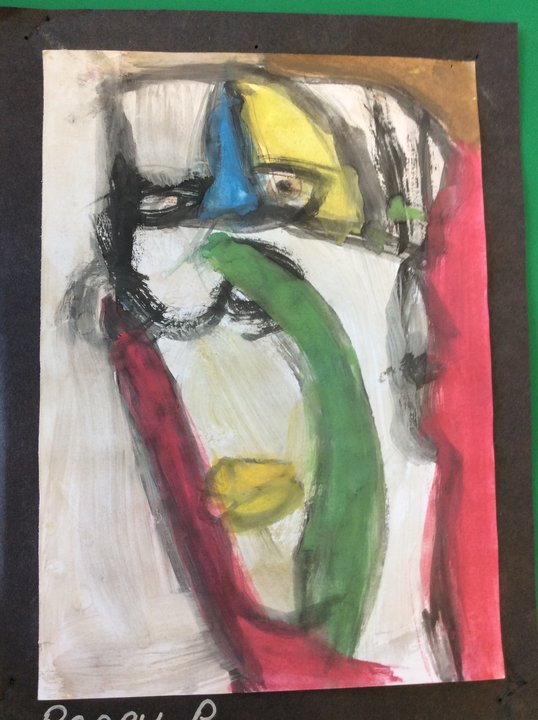ART

INTENT
‘Art is a place for children to learn to trust their ideas, themselves and to explore what is possible.’
Maryann F Kohl
At Bartley we offer an art and design curriculum designed to engage, inspire and challenge pupils, equipping them with the knowledge and skills to experiment, invent and create their own works of art, craft and design. We value art and design as an important part of the children’s entitlement to a broad a balanced curriculum which aims to provide children with stimulating and engaging opportunities to use their imagination, explore ideas and work creatively in an enjoyable and safe environment. Art and design will be used as a way of helping pupils to develop their emotional expression to further enhance their personal, social and emotional development. It will promote careful observation and an appreciation of the world around us. The pupils at Bartley will develop their knowledge of a range of artists, designers and craft makers from the great artists of the past to the contemporary, including local artists. They will know how art and design both reflect and shape our history, and contribute to the culture, creativity and wealth of our nation.
Our curriculum ensures a progression of skills in techniques of painting, drawing, printing, sculpture, collage, textiles and digital media across the year groups. All pupils will communicate what they see, feel and think through the visual elements of colour, texture, form, tone, shape and pattern. It follows a sequence that builds on previous learning, is inclusive and accessible and gives all children a platform to express their individuality and develop their self-esteem, resilience, confidence and critical thinking. These transferrable skills will help build their self-confidence across all subjects of curriculum. Our art curriculum helps children to be reflective and evaluate their work.
The aims of teaching art and design in our school are:
- To engage, inspire and challenge pupils, equipping them with the knowledge and skills to experiment, invent and create their own works of art, craft and design.
- To think critically and develop an understanding of art and design.
- To know how art and design both reflect and shape our history, and contribute to the culture, creativity and wealth of our nation.
- To produce creative work, exploring their ideas and recording their experiences.
- To become proficient in drawing, painting, sculpture and other art, craft and design techniques.
- To evaluate and analyse creative works using the language of art, craft and design.
- To know about great artists, craft makers and designers, and understand the historical and cultural development of their art forms.
IMPLEMENTATION
Art is taught in every year group, focusing on knowledge and skills stated in the National Curriculum and those from the Chris Quigley Creative Curriculum (Creative Themes for Learning). Art projects will link where appropriate to topics being taught in class to enable pupils to see, discuss and make links between Art and other subjects. Other units of work will be more skills based to ensure that every pupil can develop their technical skills and understanding.
Knowledge sheets, placed into sketch books at the start of each journey, allow pupils to understand what each module will be about. They are then able to refer back to key vocabulary, skills, techniques and artists that are taught.
Each Pupil has a sketchbook that is used to make initial sketches, develop skills, record ideas and develop opinions. They are taught that sketchbooks are a place for pupils to do their ‘art thinking’, not just for final outcomes. Pupils are encouraged to present the information and record their learning in a way that they themselves feel is best. Pupils understand that their sketchbooks will not be formally marked. Teachers may use post-its to support or comment on the art.
Every journey allows the opportunity to learn new skills and explore a key artist, craft maker or designer and their work.
Pupils explore how their art compares with famous art and use subject-specific vocabulary to discuss key artworks and their own work. They make informed observations about what will improve their own practical work.
During each lesson progress will be assessed in a range of ways. Pupils will be aware of the skills they are developing and will be able to look back on what they achieved before. Through self and peer evaluation the children will discuss what they have done well and what they will need to continue to practice and develop in order to continue to improve their skills in that particular area. The teacher will also make suggestions and refer back to previous modelling to support the pupils.
Pupils are challenged and are given the opportunity to build on their prior knowledge.
LONG-TERM OVERVIEW

MEDIUM-TERM OVERVIEW
| Name | |
|---|---|
| Art Medium Term Overview.docx | Download |
Bartley Skills Progression
| Name | |
|---|---|
| SKILLS OVERVIEW 2022.docx | Download |
Progression of language document
| Name | |
|---|---|
| vocab.docx | Download |
SUGGESTED PLACES TO VISIT FOR INSPIRING ART
Southampton art gallery
https://southamptoncityartgallery.com/
New art centre Salisbury
https://www.sculpture.uk.com/about
New forest visitors centre
Sir Harold Hilliers Gardens
https://www.visit-hampshire.co.uk/things-to-do/sir-harold-hillier-gardens-p3691
Poppies crafts Romsey
https://www.choice-plants.co.uk/poppies-crafts/





























